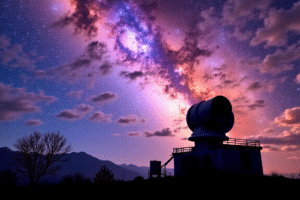Kepler’s Supernova and Other Cosmic Events in Ophiuchus
Ophiuchus, the Serpent Bearer, holds a mysterious place among the stars. Straddling the celestial equator and intersecting the ecliptic, this zodiac sign has witnessed some of the most breathtaking phenomena in the night sky. Unlike other constellations tied only to mythology or symbolic meaning, Ophiuchus is etched into astronomical history with real, visible, and explosive cosmic events.
One of the most dramatic of these events was Kepler’s Supernova, a brilliant explosion that lit up the sky in 1604 and brought humanity one step closer to understanding the lifecycle of stars. But that wasn’t the only stellar event to grace the domain of Ophiuchus. This powerful slice of the sky is home to ancient remnants, active bursts of radiation, and celestial forces that continue to awe scientists and stargazers alike.
Let’s take a journey through space and time to explore the cosmic wonders that have unfolded within the boundaries of Ophiuchus.
Kepler’s Supernova: A Stellar Explosion That Shook the World
In October 1604, skywatchers across the globe were mesmerized by the sudden appearance of a bright new object in the sky. For weeks, this “new star” rivaled the brightness of Jupiter, visible even during daylight. What they witnessed was Kepler’s Supernova, also known as SN 1604—an exploding star that released more energy in one moment than the Sun will produce in its entire lifetime.
This brilliant event took place right within the constellation of Ophiuchus. Johannes Kepler, a renowned German astronomer, studied the supernova extensively and published his observations in a treatise titled De Stella Nova. It was the last supernova in our Milky Way galaxy observed with the naked eye, and it changed the way humanity viewed the cosmos.
Today, astronomers still study the remnants of SN 1604 in Ophiuchus using X-ray and infrared telescopes. The remnants glow with eerie intensity, a cosmic echo of the explosion that once captivated the world. It serves as a scientific time capsule and a point of pride for those born under the powerful zodiac of Ophiuchus.
The Serpent Bearer’s Skies: A Hotbed of Stellar Activity
Ophiuchus is not a quiet corner of the cosmos. It’s a region teeming with stellar nurseries, ancient remnants, and energetic bursts. Some of the most active and fascinating galactic phenomena have been recorded here.
The Ophiuchus Supercluster
This massive collection of galaxies is located approximately 370 million light-years away from Earth. In 2020, scientists discovered evidence of the largest explosion since the Big Bang within this cluster. The event is believed to have been caused by a supermassive black hole at the center of one of the galaxies, which released an unfathomable amount of energy.
Though this occurred far beyond the reach of the naked eye, its location within the Ophiuchus constellation ties the Serpent Bearer to yet another chapter in the cosmic saga of creation and destruction.
The Ophiuchus Molecular Cloud
Closer to home, the Ophiuchus Molecular Cloud is one of the most active star-forming regions in the galaxy. Spanning roughly 20 light-years, this massive cloud of dust and gas is a celestial nursery where new stars are born.
Young stars and protostars light up the dense cloud with infrared radiation, invisible to the human eye but blazing bright through scientific instruments. The cloud reminds us that Ophiuchus isn’t just about dramatic endings like supernovae—it’s also about new beginnings, growth, and creation.
Barnard’s Star: A Speedy Neighbor
Located within Ophiuchus, Barnard’s Star is one of the closest stars to Earth, sitting just 6 light-years away. What makes it truly fascinating is its high proper motion—it appears to move across the sky faster than any other star visible from Earth.
This red dwarf has also been the subject of extensive studies on planetary systems. Though once thought to host a large exoplanet, recent observations suggest smaller Earth-like planets may exist in its orbit. For Ophiuchus, Barnard’s Star adds a note of intrigue and mystery to an already dynamic domain.
The Galactic Bulge and the Serpent’s Power
Ophiuchus lies close to the center of the Milky Way, where the galactic bulge creates a dense, energetic field filled with stars, gas, and cosmic dust. This proximity gives the constellation an especially electric character.
Gamma-ray emissions, radio signals, and gravitational waves ripple through this area, offering insight into the nature of the universe and the fundamental forces that shape it. For the zodiac of Ophiuchus, this celestial real estate means having a front-row seat to the most powerful forces in our galaxy.
A Table of Notable Cosmic Events in Ophiuchus
| Event | Type | Year/Period | Notability |
|---|---|---|---|
| Kepler’s Supernova (SN 1604) | Type Ia Supernova | 1604 | Brightest naked-eye supernova in Milky Way |
| Ophiuchus Supercluster Burst | Black Hole Explosion | 2020 (published) | Largest energy release since Big Bang |
| Ophiuchus Molecular Cloud | Star-forming Region | Ongoing | Active stellar nursery |
| Barnard’s Star | High Proper Motion Star | Discovered 1916 | One of the closest stars to Earth |
| Galactic Bulge Activity | Gamma Rays / Radiation | Constant | Energetic center of the Milky Way |
The Symbolic Power Behind the Stars
Cosmic events aren’t just scientific data points. For those born under Ophiuchus, these explosions, stars, and celestial clouds symbolize deeper truths. Supernovae mirror emotional breakthroughs. Black hole bursts reflect the intensity of passion. Star nurseries echo our capacity to nurture, grow, and transform.
This is the power of Ophiuchus—a zodiac sign connected not just to myth but to the very structure of the galaxy. Its domain is not calm and orderly. It’s turbulent, intense, radiant, and undeniably real.
FAQ: Ophiuchus and the Cosmos
What makes Ophiuchus so unique in astronomy?
Ophiuchus is home to a wide range of cosmic events, from historical supernovae to ongoing star formation. It also lies near the galactic center, making it rich in energetic phenomena.
Is Kepler’s Supernova still visible?
While the explosion itself is long over, its remnants are still studied today through telescopes. The X-ray and infrared data offer clues about the nature of supernovae.
What is the Ophiuchus Supercluster?
It’s a massive galaxy cluster known for the most powerful explosion ever observed. It’s about 370 million light-years from Earth but located in the direction of the Ophiuchus constellation.
Is Barnard’s Star part of Ophiuchus?
Yes, it lies within the boundaries of the constellation and is one of the closest stars to Earth. Its high motion makes it one of the most studied stars in our cosmic neighborhood.
Does Ophiuchus have black holes or gamma-ray bursts?
Yes, it’s near the galactic center, where black holes and high-energy phenomena like gamma rays and gravitational waves are frequently detected.
Are new stars being born in Ophiuchus?
Absolutely. The Ophiuchus Molecular Cloud is a thriving star-forming region where scientists observe the birth of stars in real time.
Why do cosmic events matter for astrology?
They symbolize transformation, intensity, and power. In the case of Ophiuchus, the cosmic drama happening in its domain reflects the sign’s deep emotional and spiritual significance.
Ophiuchus is not just a constellation. It is a stage for the universe’s greatest performances—a sign of drama, rebirth, and radiant power. For those who resonate with its energy, Ophiuchus is a badge of cosmic significance, where astronomy and astrology beautifully collide.







